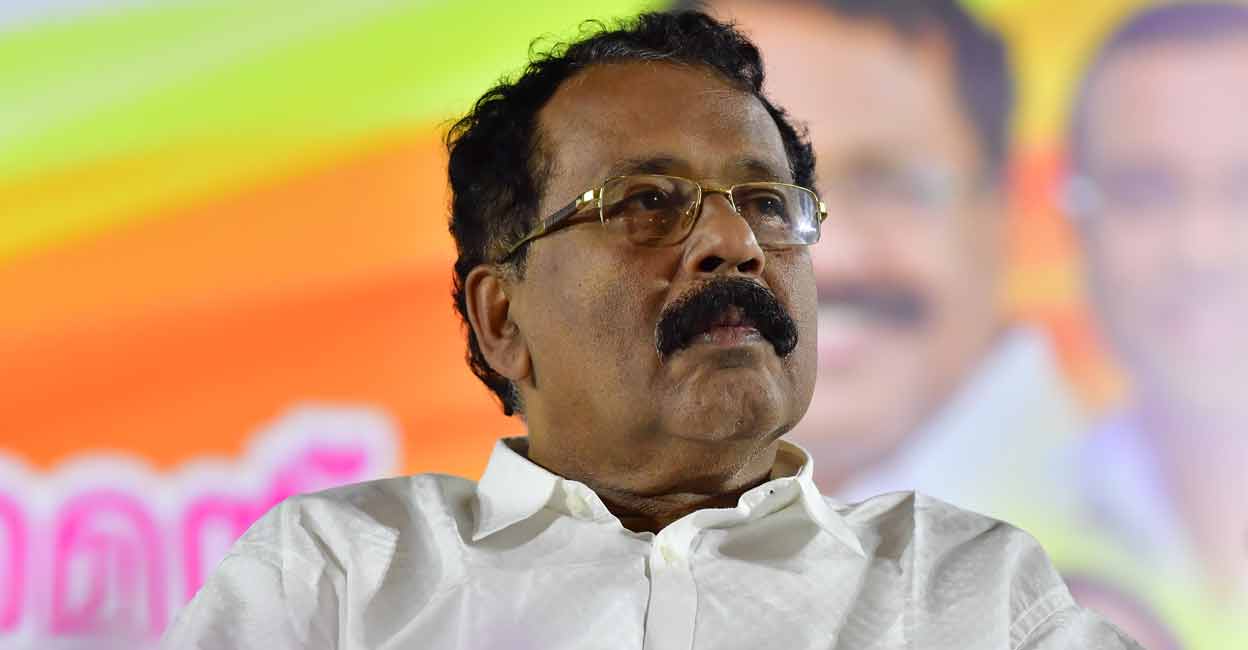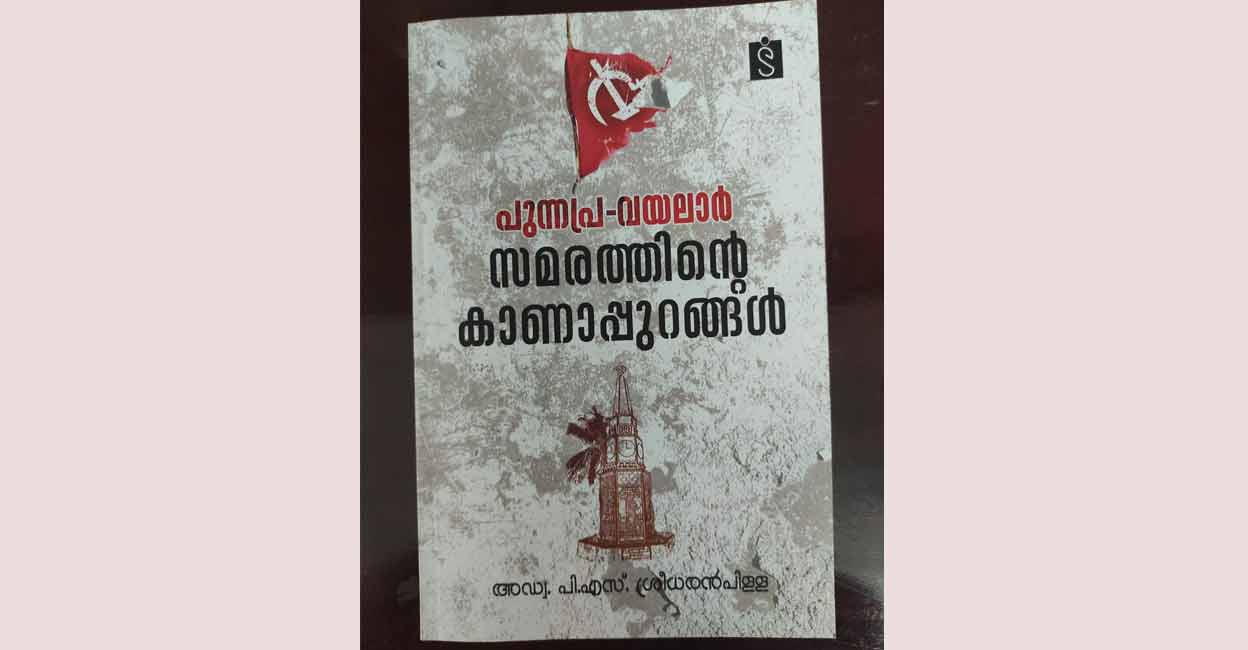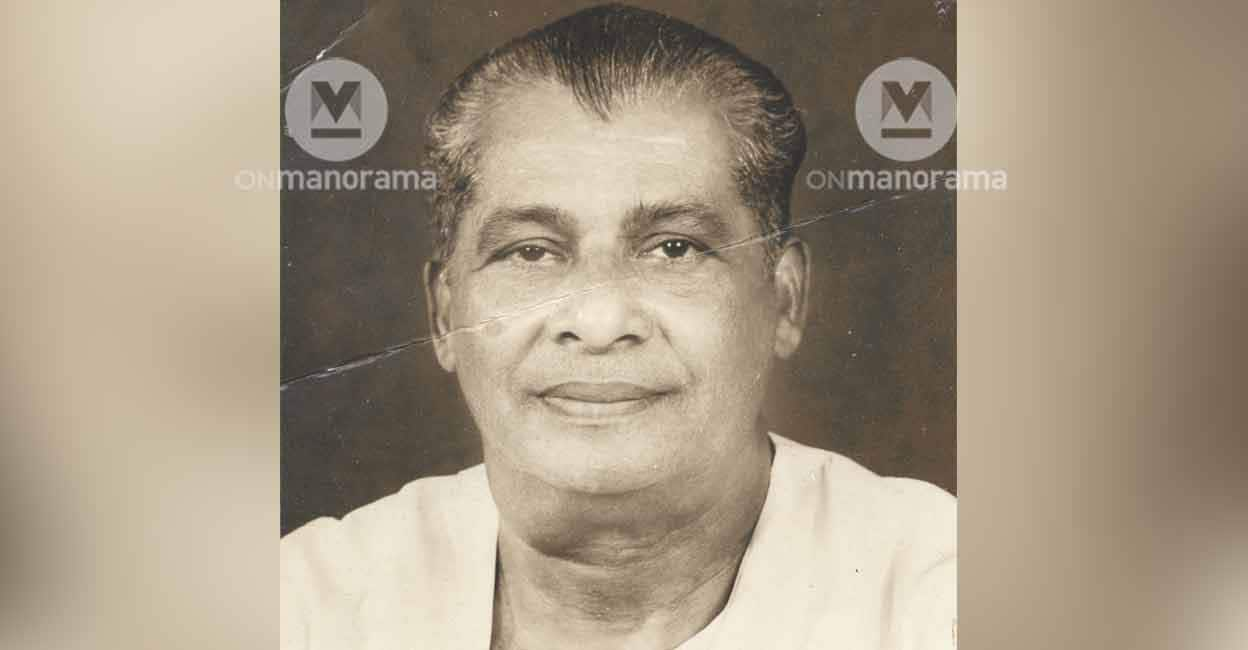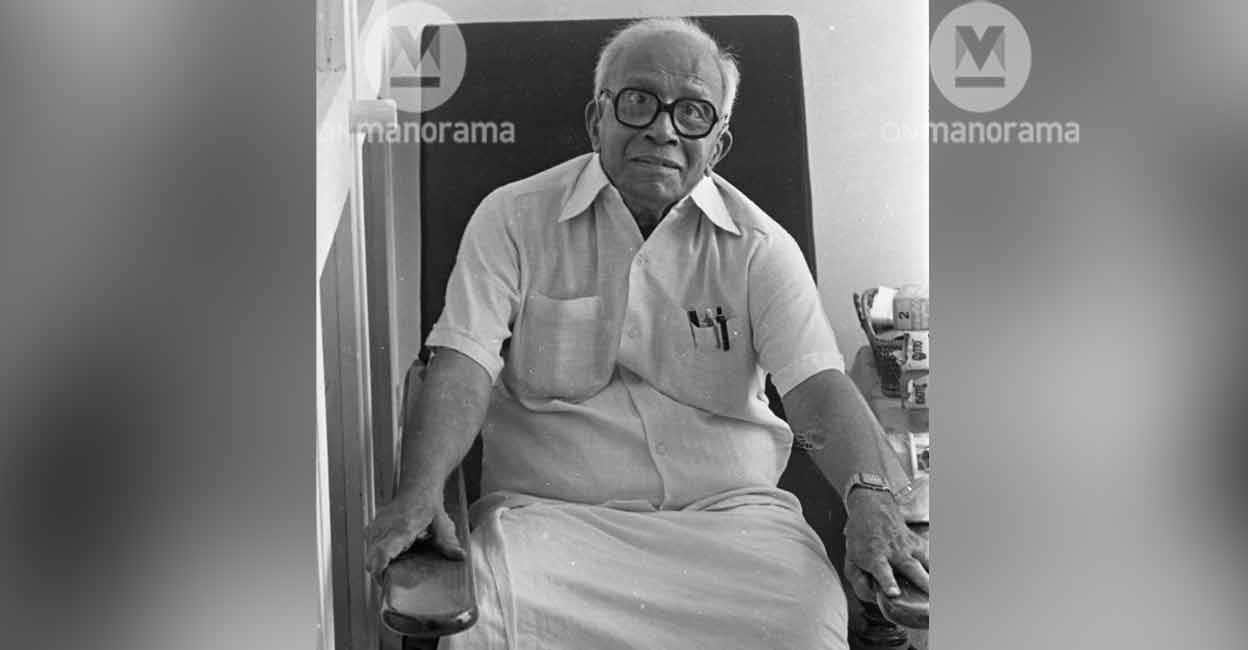BJP revives debate: People killed in Punnapra-Vayalar martyrs or Communist pawns?

Mail This Article
It is still not clear whether the Sangh Parivar is using Governor Arif Mohammed Khan to saffronise higher education in Kerala.
But one thing is certain. The Sangh Parivar has begun in earnest to undermine the role of the Communist Party of India and its stalwarts like E M S Namboodirippad and T V Thomas in India's freedom struggle and also in some of the pre-Independent uprisings in Kerala that were instrumental in giving the undivided CPI a revolutionary aura.
To begin with, the Sangh Parivar has dusted off a forgotten work by Goa Governor and former BJP state president P S Sreedharan Pillai in the hope of rekindling a dormant debate surrounding the role of the Communist Party and its leaders in the Punnapra-Vayalar Uprising of October 1946.
It was an organisation called Vigil Human Rights that conducted a debate on Pillai's work 'Punnapra-Vayalar Samarathinte Kaanappurangal' (The Unseen Dimensions of the Punnapra Vayalar Agitation) in Thiruvananthapuram the other day. The apparent context for the seminar was the 25th year of the book's publication -- the book first came out in 1997 and a second edition was brought out in 2016, and in both these instances the book did not create any stir worth noting.

On further probe it was found that Vigil Human Rights was founded by Sreedharan Pillai himself in 2000 and is packed with Sangh Parivar activists. This was Vigil's first public event in Kerala's capital and the organisers intended to create some political noise around the event.
“We wanted senior CPM leaders to be part of the debate. Our first choice was G Sudhakaran (former Ambalappuzha MLA and minister). When he declined we contacted some young CPM leaders. They too were not keen. Then we called on former Speaker M Vijayakumar and he agreed,” said J R Padmakumar, a state secretary of the BJP.
But hours before the start of the seminar on November 3, Vijayakumar called up the organisers and told them that “he was too unwell to participate”. Without the CPM presence, the event went largely unnoticed.

Shoot out and a massacre
On October 24, 1946, 28 people, including four policemen, were killed when an angry mob stormed the Punnapra Station. It is still not clear what caused this clash. Some say a misunderstanding related to a marriage proposal between two rich families in the area, and the police throwing its weight behind one party, had erupted into 'gang rivalry'-like violence.
Communists, on the other hand, say it was part of the armed resistance mounted by workers under the CPI.
After the Punnapra deaths, the CPI itself made a call to disband all labour camps that were set up as part of the general strike announced on October 20 against the Tranvancore kingdom. One camp alone, the one in Vayalar, then a small island, was not informed of the decision.
On October 27, two days after Punnapra, countless number of poor workers -- all below 25, hungry and armed with country -made spears and stones -- holed up in the Vayalar camp believing that the strike was still on were surrounded by the army on all sides and machine-gunned to death.

There is no official confirmation about the dead in Vayalar. Noted historian A Sreedhara Menon said it was in the thousands. In his work on Punnapra Vayalar, 'Communism, An Ideology of Betrayal', former Congress MLA D Sugathan said the number of dead was 103. He claims to have secured the figure from the son of the man who had buried all the dead in a pond nearby. Sugathan was MLA of Ambalappuzha under which falls Vayalar.
Was it for India's freedom?
Sreedharan Pillai contests two dominant perceptions about the Punnapra-Vayalar revolt in his book. One, that it was part of the freedom movement. Two, the 'Communist Party'-led labour uprising was against the dewan's 'Independent Thiruvithamcore' declaration.
Pillai says there is no way the uprising could be called a freedom fight as British Prime Minister Clement Atlee had announced the formation of the Cabinet Mission to work out the transfer of power to India in February 1946. “Freedom and transfer of power were thus guaranteed,” Pillai says in the book.
Soon after, on September 2 that year, a provisional Indian government under Jawaharlal Nehru assumed office. The Punnapra-Vayalar incident took place months later on October 24, 1946. “This being the case, how can the events that took place in Alappuzha in October 1946 be part of the freedom struggle,” Pillai asks in the book.

Was it against CP?
The revolt had nothing to do with C P's 'Independent Thiruvithamcore' declaration either, the book notes. The dewan's declaration came only next year, on June 11, 1947.
“At that point, stunned into inaction by the Punnapra-Vayalar tragedy, the Communists could do nothing against the dewan's declaration. It was left to the Travancore State Congress (an affiliate of the Indian National Congress) to whip up a mass movement that eventually got the dewan to withdraw his declaration and even cause him to leave Travancore for good,” Pillai says.
Lure of Communism
Nonetheless, even Pillai concedes that workers in Travancore, crushed as they were by falling wages and starvation, were drawn to the Communist movement.
In the early forties, just after the World War II, there was famine-like conditions in Travancore. To maximise profits, the feudal lords owning unending acres of land ruthlessly underpaid workers. Even a whimper of protest was met with disproportionate force by the dewan's police.
A report of Servants of India Society, a social and education reform body formed by Gopal Krishna Gokhale, had stated that over 20,000 people had died of hunger in Cherthala Taluk alone during the 1942-43 period. Clearly, there was deep unrest among coir and fish workers.
Dreams of nationhood
Workers might have found some promise in Communism but according to Pillai the Communists had a disruptive motive while mobilising workers in large numbers.
“It was a Communist dream to usurp power using workers and establish an independent nation on a linguistic basis,” Pillai writes. According to him, the Communist claim that they were against the secessionary tendencies of the dewan was a sham. He says the Communists had hoped to form an independent nation within India with the help of Soviet Union.
In support of his argument that the CPI wanted Kerala to be independent of India, Pillai quotes from the memorandum CPI general secretary P C Joshi submitted before the British Cabinet Mission in April 1946. The memorandum, accessed from CPI documents 1942-47, states that boundaries should be redrawn to create “linguistically and culturally homegenous national units”. Seventeen such units, including Kerala, have been mentioned. The CPI memorandum further says: “The people of each such unit should have the unfettered right of self determination, namely the right to decide freely whether they will join the Indian Union or form a separte sovereign state or another Indian Union.”
Was the CPM misunderstood?
Pillai saw in this the CPI's overriding ambition to break free. “These very people who had tried till the last moment to keep India divided are now saying that they were fighting for India's unity in Punnapra-Vayalar,” Pillai says.
However, a top CPM leader on the condition of anonymity, laughed away Pillai's assertion. “Sreedharan Pillai does not even have the common sense to understand that Joshi was only trying to preempt Britain's secret plan to sustain princely states as vassal countries even after Independence. In a sense, the CPI was only teasing the Cabinet Mission. Remember, Gandhi opposed the Cripps Mission in 1942 for this very reason,” the CPM leader said.
“The British Cabinet Mission, too, had arrived with the intention of implementing the same sinister plot, which is to let princely states remain as independent islands within a large independent India so that the British could have a minimum military presence in each of these independent princely states from where they can hopefully dictate terms to India. When they realised that the new states formed after a linguistic and cultural demarcation could also potentially ask for independence, the British understood the folly of their plan,” the leader said.
Nomenklatura's apathy
Pillai's biggest charge in the book is that the top CPI leadership were indifferent to the plight of the workers who were mercilessly gunned down by the army at Vayalar. “It is said that the slain bodies of the poor workers were removed only three days later. If prompt treatment and care was given perhaps some of them would have been saved,” Pillai says.
On October 29, two days after the massacre and when the bodies were still unclaimed, Pillai says T V Thomas had met Police IG Parthasarathy Iyengar at the Alappuzha tourist bungalow for a “friendly chat”. Pillai considers this outrageous. It was only because Thomas's call to disband the camps had not reached the Vayalar camp that a tragic fate befell the workers.
Worse, he noted that E M S Namboodirippad had attended a meeting of Yoga Kshema Sabha nearby on October 25, the day after the Punnapra violence. For this, Pillai quoted from Punnapra-Vayalar hero K C George's book 'Punnapra Vayalar'. Pillai also states that the chapter dealing with EMS's preference for a Yoga Kshema Sabha meeting over a visit to the sites of Punnapra-Vayalar martyrdom was taken out in the second edition of the book that came out after George's death.
Three CPM leaders Onmanorama talked to refused to comment except to say that these were lies or the Sangh Parivar was attempting to rewrite history.


